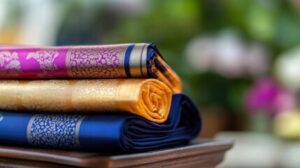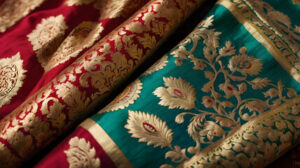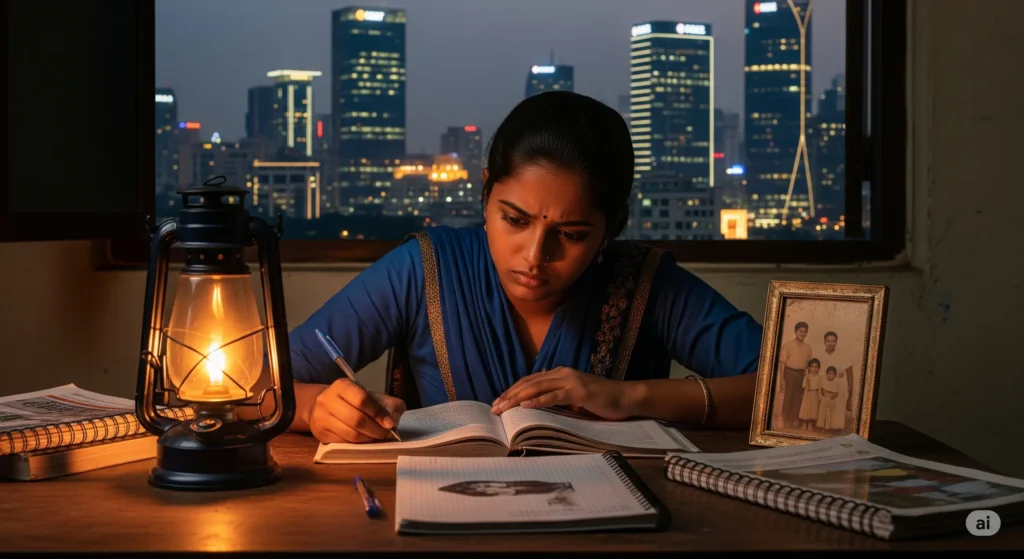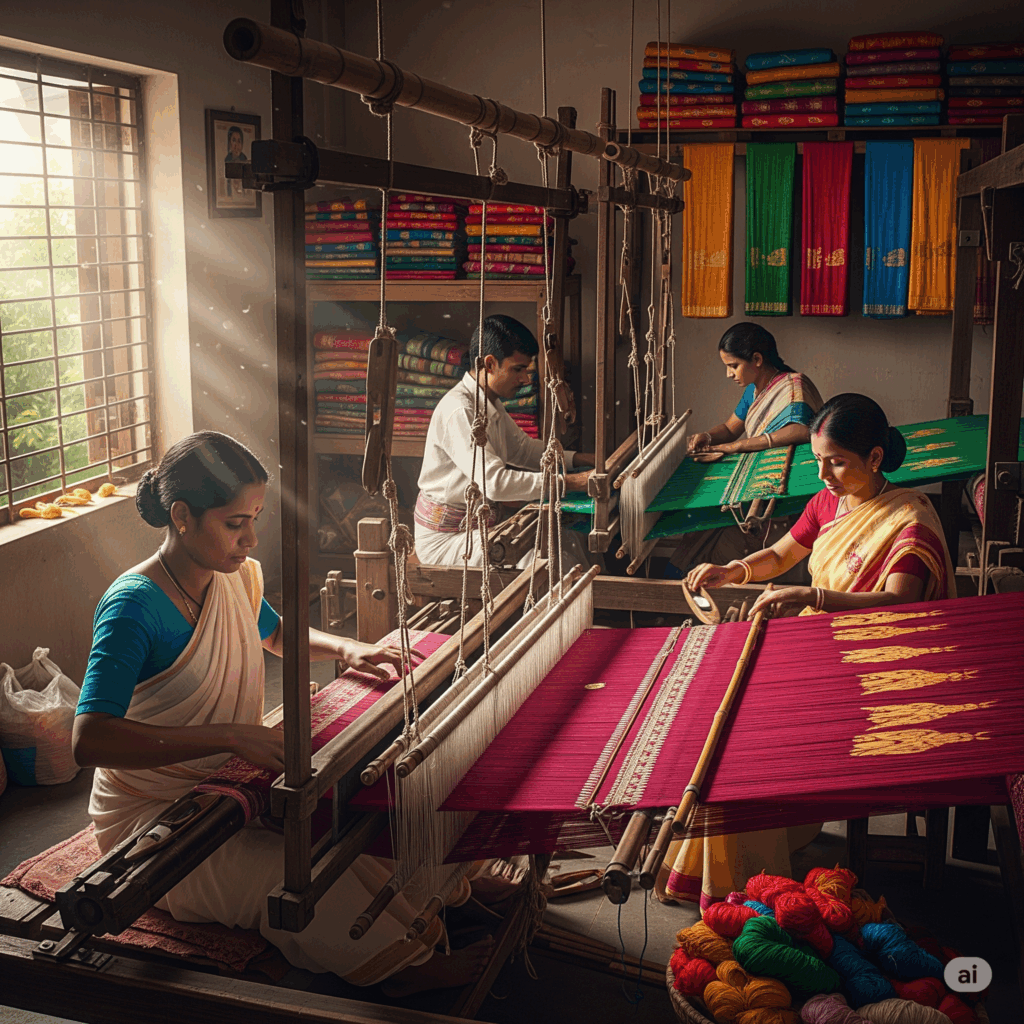Banarasi Saree: A Mughal Legacy in Silk
The Banarasi saree is not just a garment; it’s a piece of textile art with a history deeply intertwined with the Mughal Empire.
* Origins in Mughal Royalty: While silk and weaving were practiced in Varanasi (formerly Banaras) for centuries, the Banarasi saree as we know it today truly flourished during the Mughal period, starting around the 14th century. Mughal emperors, known for their love of opulence and art, patronized weavers and artisans. This patronage led to the introduction of Persian and Mughal motifs and techniques.
* Zari and Brocade: The defining feature of a Banarasi saree is its intricate brocade and zari work—the use of fine gold and silver threads to create elaborate designs. This technique was refined by weavers who migrated to Varanasi from Gujarat during a famine in the 17th century. They brought with them their weaving skills, which merged with the local traditions.
* Signature Motifs: The designs on a Banarasi saree are heavily influenced by the Mughals, featuring motifs like intertwining floral and leafy patterns (kalga and bel), upright leaves (jhallar), and intricate network patterns (jal).
* Cultural Significance: Banarasi sarees became a symbol of wealth, status, and prestige. They are an essential part of an Indian bride’s trousseau and are worn on significant occasions like weddings and festivals. The meticulous hand-weaving process can take anywhere from a few weeks to several months, making each piece a work of labor and love.
Gota Patti Work: The Royal Appliqué from Rajasthan
Gota patti is a type of embroidery that is synonymous with the regal heritage of Rajasthan.
* Royal Roots: This technique, which uses thin gold or silver ribbons (gota) appliquéd onto fabric, originated in the royal courts of Rajasthan. It was a craft practiced for and by the Rajput and Mughal royalty, symbolizing their wealth and high social standing. The use of real gold and silver threads in the past made it an incredibly luxurious and expensive art form.
* The Technique: The process involves cutting ribbons of gota into various shapes—like leaves, flowers, and geometric patterns—and then stitching them onto the fabric. The fabric is often tied to a wooden frame called an adda to keep it taut during the intricate work.
* Nature-Inspired Motifs: Gota patti designs often draw inspiration from nature, with motifs like flowers, leaves, birds, and animals. The embroidery is typically done on rich fabrics like silk and chiffon.
* Evolution and Modernization: While it was once reserved for royalty, the craft has become more accessible over time. Today, the metallic threads are often made of more affordable materials like lurex, but the traditional artistry remains. Gota patti is still a staple in Rajasthani bridal wear and is widely used in festive and occasion wear across India.





